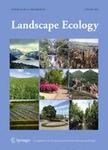版权所有:内蒙古大学图书馆 技术提供:维普资讯• 智图
内蒙古自治区呼和浩特市赛罕区大学西街235号 邮编: 010021

作者机构:Univ Calif Davis Dept Plant Sci Davis CA 95616 USA Cary Inst Ecosyst Studies Millbrook NY 12545 USA Rutgers State Univ Dept Ecol Evolut & Nat Resources New Brunswick NJ 08901 USA
出 版 物:《LANDSCAPE ECOLOGY》 (园林生态学)
年 卷 期:2010年第25卷第1期
页 面:53-67页
核心收录:
学科分类:08[工学] 0708[理学-地球物理学] 09[农学] 0705[理学-地理学] 0902[农学-园艺学] 0713[理学-生态学] 0834[工学-风景园林学(可授工学、农学学位)]
基 金:National Science Foundation [DEB 042376] biocomplexity program [BCE 0508054] CAREER program [DEB-0844778] Direct For Biological Sciences Division Of Environmental Biology Funding Source: National Science Foundation
主 题:Visual interpretation Object-based classification Patch classification Accuracy assessment Fuzzy set theory Spatial heterogeneity Urban landscape Land cover
摘 要:Visual interpretation of remotely sensed imagery has long been used for landscape pattern analysis. Few studies, however, have investigated human variation in estimates of within-patch composition for classification of those patches, particularly in urban settings. This paper compares the agreement of two approaches-visual interpretation and object-based-to estimate the proportion cover of landscape features within delineated patches, and investigates the spatial patterns of patches with large disagreement between the two approaches. The two approaches were compared for the Gwynns Falls watershed, Maryland, USA. Three methods were used to assess agreement: a traditional error matrix based procedure and two fuzzy methods, a plus-one modification of the traditional procedure, and a fuzzy set theory method. We found that while visual interpretation does not work effectively when patches contain a mix of different types of features, accuracy increases with patches that are either dominated by a specific feature, or do not contain a specific feature. The overall accuracies of estimates by visual interpretation also vary by features, ranging from 63.3% for pavement to 93.8% for bare soil. Patches with large disagreement between the two approaches cluster spatially at locations where the urban landscape is more structurally complex, suggesting the accuracy of visual interpretation may be affected by patch shape complexity, and the spatial configuration of the landscape features within the patches. These results provide important insights into the accuracy of thematic maps based on visual interpretation, not only for ecologists and managers who are using the maps, but also for those who produce the maps.